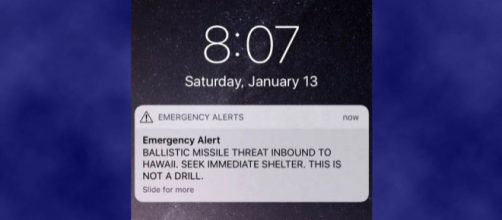On January 13, Hawaii was shocked by a ballistic missile threat warning, broadcast via cellphones, TV and radio, with residents’ panic continuing for a full 38 minutes before it was announced that it was a false alarm. An investigation by the Federal Communications Commission (FCC) has now revealed the cause of the erroneous emergency alert.
Hawaii state emergency manager resigns over false alert
Vern Miyagi, the state emergency manager in Hawaii, resigned on Tuesday after the results of the investigation showed an employee did not click on the wrong button on a confusing menu, but rather had mistaken the alert as the real deal due to miscommunication by officials.
According to a report by the FCC, it turns out an unplanned emergency drill was being run at the time and the employee in question – who reportedly has a history of various mishaps – did not get the part of the message that said it was merely a test.
#Hawaii employee who sent alert #thought real missile was #incoming; #state #emergency #manager resigns https://t.co/narTnV6tG4 pic.twitter.com/G1O5XT7TkT
— Simply (@SimplyNewsApp) January 31, 2018
However, the unidentified employee is not totally to blame. The investigation showed the employee to have insufficient supervision. The false alarm has now been attributed to a mix of inadequate safeguards and human error after FCC officials found top emergency management officials had miscommunicated with others about plans to hold a drill.
Reportedly a night-shift supervisor was the one who chose to hold a missile drill during a shift change, to test how the Hawaii Emergency Management Agency would respond in such a situation. That supervisor played a recording of a phone call to employees, pretending to be an official with the U.S. Pacific Command, the agency normally tasked with such warnings.
Employee mistook drill for a real missile alert
According to James Wiley, an FCC advisor, the recording started with the words, “exercise, exercise, exercise,” which is consistent with the start of the drill script. However, the script that followed did not follow the agency’s standard operating procedures. Instead, it included language intended to be used in an Emergency Alert System message about a real ballistic missile alert, hence the words “this is not a drill” were included.
It turned out the employee in question did not hear the words “exercise, exercise,” and only caught the “this is not a drill” statement, leading to them believing it was the real deal.
A Hawaii official resigns in wake of findings on false missile alert. A new FCC report says the worker who sent the alert thought the threat was real. https://t.co/UM9QlYkfGC pic.twitter.com/nd1ni36iLo
— CNN Breaking News (@cnnbrk) January 30, 2018
It was at that time that the employee issued the alert to the Hawaii public using the agency’s alert software. According to the report, while local and federal officials confirmed this was a false alarm within minutes, it took 38 minutes to get the news across to the panicking Hawaii public.
No procedures in place to stop the employee sending the alert
The Los Angeles Times quotes Wiley as saying there were, at that stage, no procedures in place to stop an individual from erroneously sending out a missile alert in the state. While the alert was over a matter of utmost gravity, no requirement was in place for the employee involved to double check with a supervisor before sending out the erroneous message.
Miyagi, the official who has resigned, has been in charge of Hawaii’s efforts over the last year to prepare the alert system after North Korea performed missile tests which suggested they could attack the U.S.


